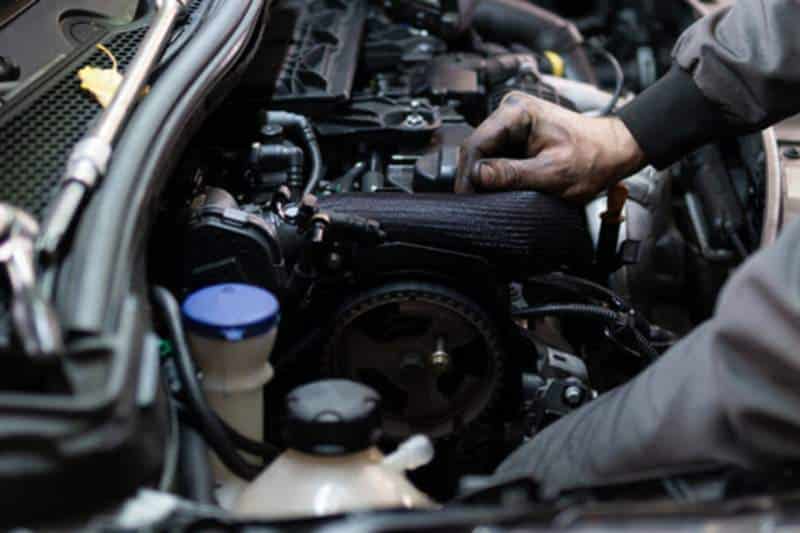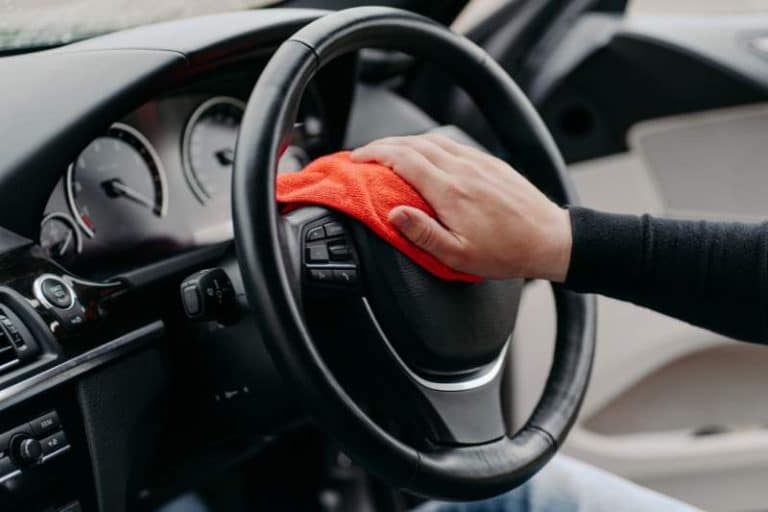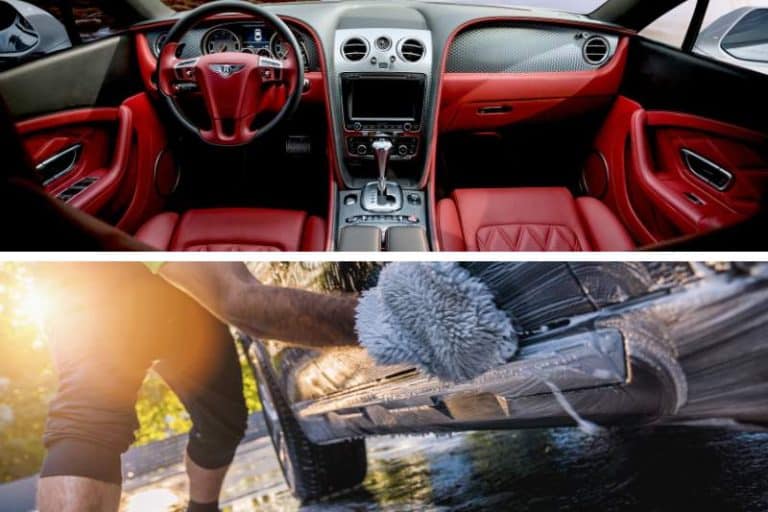SYMPTOMS OF A BAD CAMSHAFT POSITION SENSOR

The camshaft position sensor (CMP) is just one of many electrical components found in vehicles. Let’s take a look at what these components are, the symptoms of a bad camshaft position sensor, and the expected replacement cost if they fail.
Many people confuse camshaft position sensors and crankshaft position sensors because they sound similar. However, there is a big difference between the two as they perform different functions within the vehicle and present different symptoms when a problem occurs.
PROBLEMS THAT CAN BE CAUSED BY A FAULTY CAMSHAFT POSITION SENSOR
- A faulty camshaft position sensor (CMP sensor) can lead to a number of confusing problems, depending on how it fails and the car model:
- In some vehicles, a faulty camshaft sensor can lock the transmission in only one gear until you shut off and restart the engine. This cycle can be repeated intermittently.
- If the sensor starts to fail while your car is in motion, you may feel the car shake as it loses power.
- Engine power may be lost noticeably. For example, the engine cannot accelerate above 35 mph.
- The engine may stop intermittently.
- You may notice poor engine performance including uneven acceleration, misfires, difficult starting, or sudden climbs.
- In some car models, a faulty CMP sensor will prevent the ignition from producing a spark, so the engine will not start at all.
Common Symptoms of a Faulty Camshaft Position Sensor
Check Engine Light Illuminates
If the camshaft position sensor is faulty or starts to have problems, the first thing to notice is that the “Check Engine” light comes on on the dashboard. Obviously, the “Check Engine” light can indicate a variety of problems and is not necessarily a bad camshaft position sensor.
In this case, you will need to use the OBD2 scan tool to retrieve the diagnostic trouble codes stored in your car or have a professional mechanic inspect your car’s engine control module to see what’s going on. They will also scan this module to receive a series of error codes that tell you what the real problem is.
Do not ignore or delay having your vehicle scanned or inspected when the Check Engine light is on. Otherwise, the engine may be seriously damaged. The engine may even fail completely. This means that the engine will eventually have to be reassembled or replaced.
Ignition Problems
As the camshaft position sensor fails and weakens, so does the signal sent to the vehicle’s computer. This eventually means that the car cannot start because the signal is so weak that there is no spark from the ignition.
Car Jerking or Surging
If you are driving a vehicle and the camshaft position sensor starts to fail, the engine shuts off and the vehicle suddenly moves or pulls forward.
This is the result of an inadequate amount of fuel injected into the cylinders because the PCM is getting the wrong information from the camshaft position sensor.
Engine Stalling
Worse than being unable to start the car, the engine actually shuts off or stops while driving because the fuel injectors have not been commanded to inject fuel into the engine cylinders.
Poor Acceleration
Except for jerks, if the camshaft sensor starts to fail, the vehicle will not be able to accelerate very quickly. Damn, in some cases you’d be lucky to accelerate beyond 30 mph. Bad acceleration is again caused by incorrect fueling by the injectors.
Problems Shifting
Certain car models with poor camshaft position sensors will lock the transmission locked into a single gear. The only way to get out of that gear is to turn the engine off, wait a while, then start again.
This is only a temporary solution and the problem will reappear, requiring permanent sensor replacement.
Along with this, the vehicle can be in “lymph mode” in which it cannot shift gears or accelerate beyond a certain speed.
Bad Fuel Mileage
This is the opposite of not giving the engine enough fuel. In this case, an inaccurate reading of the wrong camshaft position sensor will inject more fuel into the engine than necessary, resulting in poor fuel economy.
A CAMSHAFT POSITION SENSOR CAN FAIL WITHOUT WARNING
An intermittent or complete failure of the CMP sensor while on the road could be dangerous. It can happen at any time: you are driving on the highway, going through fast traffic, when the engine suddenly loses power. There is nothing to do but watch in horror as a vehicle approaching 70 miles per hour hits you from behind. It’s not a pretty picture, but it has happened many times.
WHAT IS A CAMSHAFT POSITION SENSOR?
The camshaft controls the opening and closing of the intake and exhaust valves.
Your engine cylinder head houses one or two camshafts, a shaft equipped with off-center lobes, to operate the intake and exhaust valves. The crankshaft, located on the engine block, drives the camshaft using gears, timing chains or timing belts.
To determine which cylinder is on its power stroke, your car’s computer monitors the rotational position of the camshaft in relation to the position of the crankshaft using a camshaft position (CMP) sensor. Use this information to adjust the spark timing and performance of the fuel injectors. Therefore, the CMP sensor affects fuel economy, emission control, and engine efficiency.
HOW THE SENSOR CAN FAIL
The symptoms the engine may experience at this point may vary depending on the type of sensor failure (e.g. problems with circuitry, connectors, the sensor itself, or related components).
Once your car’s computer detects a CMP sensor failure, it will activate the check engine light and store a diagnostic trouble code (DTC) in its memory (see the table below for common diagnostic trouble codes camshaft position sensor).
CMP CODES AND THEIR MEANING
| SR | Common CMP Trouble Codes | Source of the problem |
| 1 | P0340 CMP | Circuit malfunction |
| 2 | P0341 CMP | Circuit performance or range issue |
| 3 | P0342 CMP | Low input circuit |
| 4 | P0343 CMP | High input circuit |
| 5 | P0344 CMP | Intermittent circuit |
CAMSHAFT POSITION SENSOR LOCATION
As you might expect, the specific location of the camshaft position sensor varies depending on the make and model of a vehicle. On most models, you can find the sensor somewhere around the cylinder head. Look around the top section of the timing belt / chain cover (on the front of the engine) or at the rear end of the cylinder head. Some GM models may have a special compartment for the sensor.
Additionally, some Mercury Villager and Nissan Quest models locate the CMP sensor inside the distributor housing, as well as some Dodge Ram B1500, B2500, and B3500 series models with gasoline engines.
Depending on the specific model of your car, your engine may have one or more cam sensors.
SAW. CMP SENSOR TROUBLESHOOTING
If your car’s computer has already turned on the check engine light. You can retrieve the code (the DTC) using a relatively inexpensive code reader or scan tool. If you don’t own a code reader and can’t afford to buy one and you can still drive your car safely. Just go to a nearby auto parts store that will retrieve DTCs for free.
After confirming a CMP sensor-related trouble code, it’s worth doing a few simple tests. A trouble code that points to a possible CMP sensor failure does not necessarily mean that the sensor itself is faulty. You may be dealing with a cable, connector, or related component failure that you can repair yourself.
First, check the condition of the electrical connector and sensor cables. Unplug the connector and check for rust or contamination, such as oil, that will interfere with good electrical contact. Then check the cables for damage: broken cables, loose cables, and signs of burns caused by nearby hot surfaces. Make sure the sensor wires don’t touch the spark plug wires or ignition coils which can interfere with the sensor signal.
TESTING A TWO-WIRE SENSOR
- If you have a two-wire magnetic type CMP sensor, set the multimeter to “AC volts.”
- Have an assistant turn the ignition key without starting the engine.
- Verify that there is power flowing through the circuit. Touch one of your probes to ground and the other probe to each of the sensor wires. If neither wire is live, there is a fault in the sensor circuit.
- Ask your assistant to start or start the engine.
- Touch one of your meter’s probes to one of the sensor wires and the other probe to the other wire. Check your meter display and compare your reading to the specifications in the manual. In most cases, you will see a fluctuating signal between 0.3 volts and 1 volt.
- If there is no signal, you have a bad CMP sensor.
TESTING A THREE-WIRE SENSOR
- Once you identify the power, grounds, and signal wires with your vehicle’s repair manual. Test the sensor circuit by setting your multimeter to “volts DC.”
- Have an assistant turn on the ignition key, but do not start the engine.
- Touch the black probe of your meter to ground (a metal bracket, bolt, or metal surface on the motor) and the other probe to the power cord. Compare your reading to the specification in your manual.
- Ask your assistant to start or start the engine.
- Touch the signal wire to the red probe on your meter and the ground wire to the black probe. Compare your reading to the specification in your vehicle’s repair manual. If the voltage signal is lower than specification, or no signal is coming out of the sensor the sensor is faulty.
- Remove the sensor and inspect it for signs of physical damage or contamination.
WHAT IF MY CMP SENSOR SEEMS TO BE WORKING FINE?
If your CMP sensor appears to be working properly, consider these possibilities.
FUEL INJECTORS DO NOT FIRE
In many vehicle models, the car’s computer uses the signal from the CMP sensor to trigger the fuel injectors.
If you have determined that your engine has spark but the fuel injectors are not firing. There is a possibility that your CMP sensor has failed.
CMP SENSOR INTERNAL CIRCUIT MALFUNCTION
It is not uncommon for the internal circuitry of a CMP sensor to develop an electrical break. This is generally due to the sensor being exposed to high engine operating temperatures.
High temperatures can break a cable. The broken wire can still make contact while the engine is cold. As soon as the engine compartment temperature rises, the damaged cable can expand and separate, creating an intermittent fault.
FAULTY TIMING BELT OR CHAIN
If your tests seem inconclusive, especially if the problem has triggered a fault code related to the CMP sensor. You may want to check your timing belt or chain.






